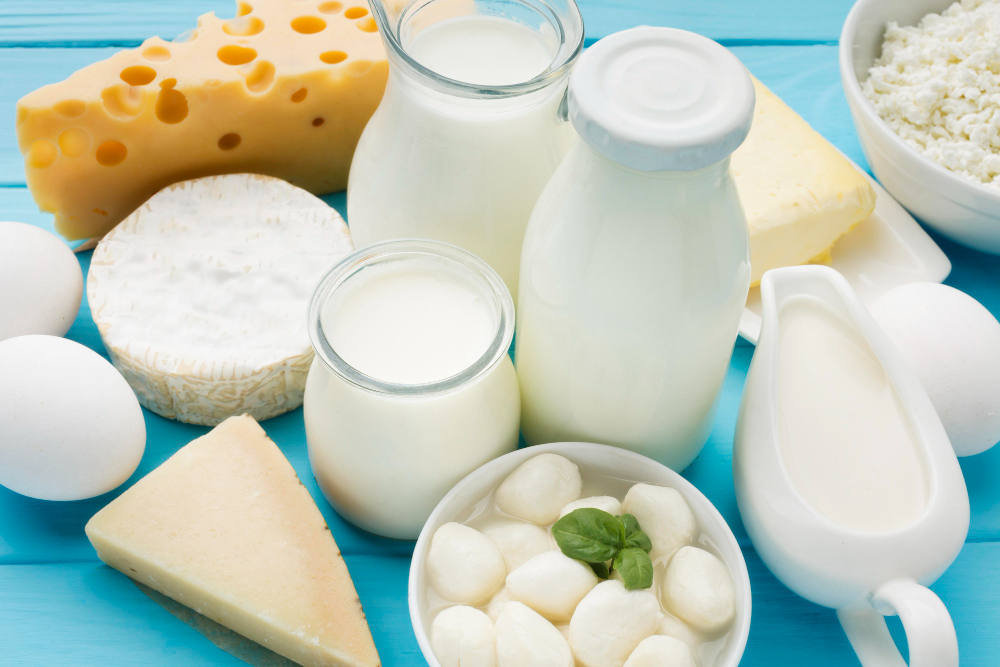
13 Jan Curd Processing Using Starter Culture: A Comprehensive Guide
Curd, a staple in many households worldwide, is a dairy product known for its rich taste, smooth texture, and numerous health benefits. The science behind curd processing has evolved significantly, with starter cultures playing a pivotal role in ensuring consistency, quality, and enhanced nutritional value. This article explores the intricacies of curd production using starter cultures and the benefits they bring to the table.
What is a Starter Culture?
A starter culture is a carefully selected group of microorganisms, primarily lactic acid bacteria (LAB), used to ferment milk into curd. Common bacteria in starter cultures include Lactobacillus delbrueckii subsp. bulgaricus and Streptococcus thermophilus. These microorganisms metabolize lactose, the natural sugar in milk, into lactic acid, which thickens the milk and imparts the characteristic tangy flavor to curd.
Key Steps in Curd Processing Using Starter Culture
- Milk Selection and Preparation:
- Choose fresh, high-quality milk for curd production.
- Standardize the milk’s fat and protein content to achieve desired consistency and texture.
- Pasteurize the milk to eliminate pathogens and unwanted microorganisms, ensuring a controlled fermentation process.
- Cooling:
- After pasteurization, cool the milk to the optimal inoculation temperature, typically around 40°C (104°F).
- Inoculation with Starter Culture:
- Add the starter culture to the cooled milk. The recommended dosage depends on the milk’s volume and the specific culture used.
- Mix thoroughly to ensure even distribution of the culture.
- Fermentation:
- Incubate the inoculated milk at a controlled temperature, usually between 37–45°C (98.6–113°F), for 4-8 hours.
- Monitor the pH, aiming for a final pH of around 4.5. This indicates successful fermentation.
- Cooling and Storage:
- Once the desired acidity and texture are achieved, cool the curd to stop further fermentation.
- Store the curd at refrigeration temperatures (4–8°C) to maintain its quality and extend shelf life.
Advantages of Using Starter Cultures
- Consistency:
- Starter cultures ensure uniform fermentation, resulting in consistent taste, texture, and quality.
- Enhanced Nutritional Profile:
- Certain cultures can increase the bioavailability of nutrients, such as B vitamins and probiotics, benefiting gut health.
- Safety:
- By producing lactic acid, starter cultures lower the pH, creating an environment that inhibits the growth of harmful pathogens.
- Customization:
- Manufacturers can select specific cultures to tailor the flavor, texture, and shelf life of the curd to meet consumer preferences.
Challenges in Using Starter Cultures
- Contamination:
- Proper hygiene and sanitation are crucial to prevent contamination that can compromise the quality of the curd.
- Temperature Sensitivity:
- Deviation from optimal fermentation temperatures can affect the activity of the starter culture, leading to inconsistent results.
- Cost:
- High-quality starter cultures can be expensive, especially for small-scale producers.
Innovations in Starter Culture Technology
Advancements in biotechnology have led to the development of customized and robust starter cultures. For instance:
- Probiotic Cultures: These contain beneficial microorganisms like Lactobacillus acidophilus and Bifidobacterium spp. to enhance gut health.
- Thermostable Cultures: Designed to withstand higher temperatures, these cultures ensure reliability in diverse processing conditions.
- Flavor-Specific Cultures: These allow producers to create curds with unique taste profiles to cater to regional preferences.
Conclusion
The use of starter cultures in curd processing has revolutionized the dairy industry, providing a reliable and efficient method to produce high-quality curd. By ensuring consistency, safety, and enhanced nutritional benefits, starter cultures meet the demands of both consumers and manufacturers. As technology advances, the possibilities for innovation in curd production are boundless, promising an exciting future for this age-old dairy product.


